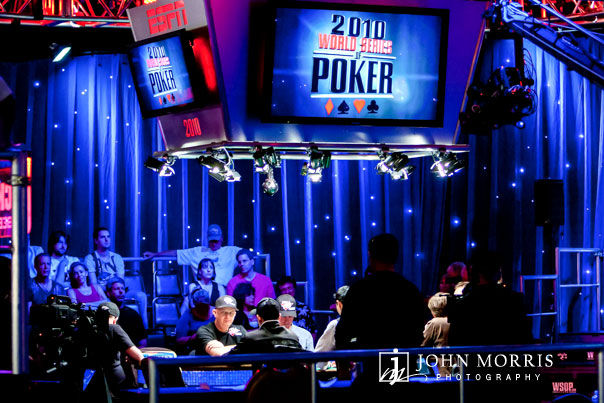
Las Vegas Corporate Photography: The World Series of Poker Part 2
A case study for a Las Vegas Event Photography for me was covering the World Series of Poker for Bodog Poker between 2007-2012. During the period, The World Series of Poker was huge. Drawing more than 72,966 contestants in 2010, the WSOP poker became a major draw for Harrah’s Casinos and Las Vegas. WSOP had been around since the early 1970s but when Harrah’s acquired the rights to the WSOP by purchasing Binion’s Horseshoe in downtown Las Vegas in 2004, they quickly marketed and expanded the tournament into a worldwide phenomenon covered by ESPN and most major news and entertainment outlets. As a Las Vegas Corporate Photographer, this massive corporate event quickly became one of my favorite events to photograph every year.
The WSOP encompassed all the most exciting aspects of being an event photographer, while also challenging all the skills and best practices needed to be a successful, professional event photographer in Las Vegas. I’ve broken this post into three separate parts and will talk about what it took professionally, skill-wise, and equipment-wise in order to provide my clients with the best service & imagery possible.
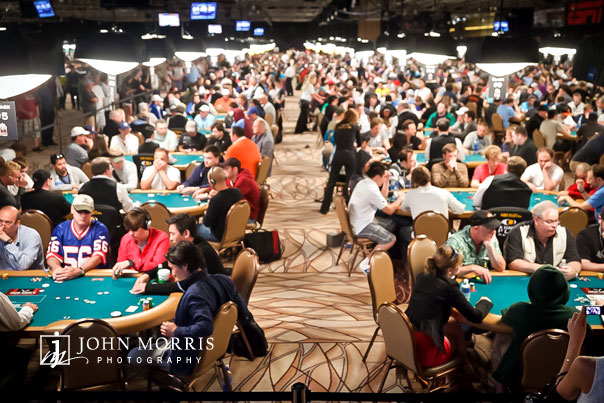
Part 2 Photographic Skills required for the WSOP Poker Event
In my last post, I spoke about the professional aspects required of me in order to successfully provide my client, Bodog, with the valuable, timely and impactful photographs they needed to properly propel their brand at the World Series of Poker in Las Vegas
As promised, in part 2 of my WSOP case study, I will focus on the particular photographic skills, both technical as well as atheistic needed to complete the 5-day long shoot successfully.

My Camera as an Extension of Myself
Event Photography is both a science and an art and some might add a third component that I am going to call philosophical. Let’s start with the technical aspects and skills I used during the shoot as I think this is the easiest to explain and quantify.
An obvious skill to start with is understanding your camera and gear. The WSOP of poker, like many sporting events, is a very fast-paced series of events, press conferences, red carpet events, celebrity sightings, product shots, and journalism. It’s event photography, commercial photography, sports photography and portrait photography all rolled into one massive shoot.
I might go from shooting players at endless rows of tables in harsh, tungsten and fluorescent light, to shooting an environmental cover shot of a famous player for an online article with no setup time, to a red-carpet grip and grin to quick headshots all before lunch.
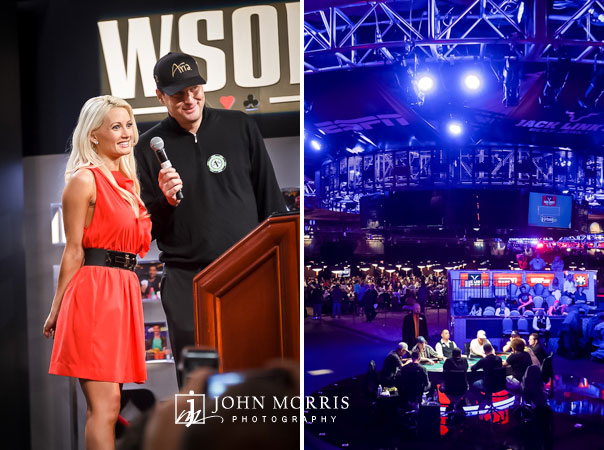
Knowing and being intimately comfortable with my camera, lens, and flash units, what they are capable of, and what they aren’t is critical to getting EVERY shot I was asked to get.
This is not the time to try out a new camera or an upgraded flash unit. Without humble bragging, I can honestly say that I am so comfortable with my Canon 5d Mark III and Canon 1D Mark IV, that I never have to think about what my hands are doing. I can simply and quickly assess the light, and automatically adjust camera setting, menu settings, flash comps without lifting my eye from the viewfinder.
Being able to operate my equipment without thinking is a crucial skillset when you are working on large, multi-faceted events such as the World Series of Poker. I’ll be honest, it’s a huge confidence boost to be able to operate at this level of efficiency and mastery with my camera equipment. It’s the main reason I am reluctant to purchase newer gear unless the upgrade will absolutely increase the quality of my images.
How skilled and competent you are with your equipment should be directly correlated with the size and complexity of an event you as an event photographer are comfortable accepting. Finding the balance of photographic skill level with the complexity of the event will ensure quality images and excellent service and professionalism that your client expects.
But most importantly, with complete mastery, understanding, and confidence in my ability to use my equipment, I am able to focus on the most important aspects of my photography and that is the creativity and personal vision that brings out the best in my subject and separates my work from all others.

Event Photography and the Exposure Triangle
Knowledge of the how-to of the exposure triangle is a must-have for professional event photographers but the why is an important first step. Understanding why the exposure triangle is important will guide your approach to event photography and help develop a good working knowledge of your camera and lens. I will discuss lens usage later but let’s link understanding of exposure to the skill with a camera first.
Modern cameras have done an excellent job of calculating and controlling camera settings for exposure for a long time now. The Program and Auto settings are quite capable of handling many photographic situations. In fact, I will often use aperture priority mode, particularly when outdoors and in available light, situations. Shooting fast-paced events or when light levels are subject to frequent changes such as the sun ducking in and out of the clouds are also good times for me to switch to auto modes.
I will also use aperture priority to get a base exposure when I am starting out or unfamiliar with a particular lighting level or quality. This works particularly well when moving from an indoor setting to an outdoor one and I don’t have time to properly evaluate the scene. If the action is happening as I arrive, I will quickly turn to either mode until I can take stock of the situation and make fine adjustments in manual mode.
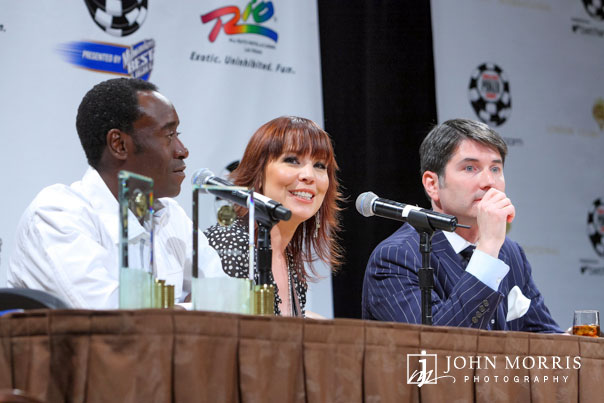
However, I ultimately prefer to in manual mode and would estimate that I use this mode in about 80% of my events. Generally speaking, once I have determined the correct exposure and color temp, the lighting tends to remain consistent I only occasionally apply adjustments. This applies to available light, low light conditions, and flash as well.
I am neither a purist or an auto snob and whatever works is all that matters to me. I find the manual exposure mode to be easiest and the most consistent and I respond as needed to adjust for changes. There are other methods that work just as well, providing the photographers has a good understanding of the exposure triangle and how it affects camera settings and capabilities.
No mode is a substitute for understanding the exposure triangle and how it relates to camera settings. Despite popular opinion, digital images are not all-forgiving. In fact, proper exposure is more important now than ever. Granted, new sensors are much more forgiving than they were a few years ago however, there are two facts I adhere to when getting the exposure right in camera.

The first, improper exposure can lead to noise in the blacks or a complete loss of detail in the whites. Even in raw, clipping that occurs in the shadows or highlights is most likely not recoverable and leads to serious degradation of the quality of the images. Understanding exposure, your camera’s limitations, and how to adjust your settings quickly to changing conditions is critical to high-quality photographs.
Second, is a time issue. In fast-paced events such as the World Series of Poker, I am tasked with providing images on an hourly basis for social media, press releases, an hourly blog, and a daily publication. Many times, I am sending images from one event while shooting or waiting to shoot another. There is no time to process raw images, so I shoot both raw & jpeg on dual cards and provide jpegs straight out of the camera.
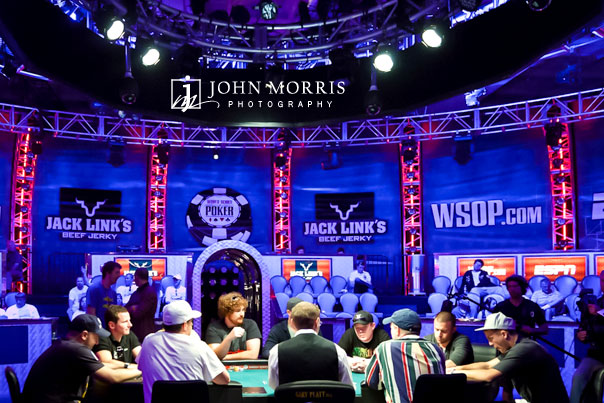
Needless to say, the exposures have to be correct, straight out of the camera which requires I understand how my camera interprets color temperature, highlights and shadows, and overall exposure. I also need to understand how ISO, shutter speed, and f-stop work together to get the best exposure, focus, depth of field and avoid camera shake and subject movement.
So, the question is, why understand the exposure triangle? Because with the understanding of why, I can practice and learn proper exposure, how it affects composition and image capture, and use best practices to ensure the images I am capturing are exciting, relevant and creative. I will address the how-to of the exposure triangle in a different post.
For more information about raw vs jpeg check out this video
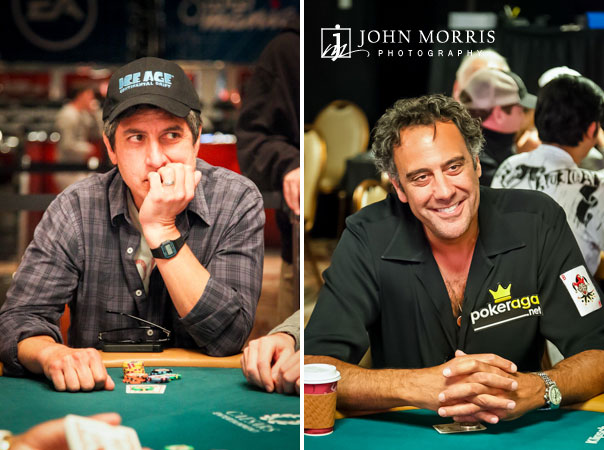
Event Photography Lens Choice. My Go to Lenses at the WSOP
I am not sure if knowing how to use a lens is a skill or knowledge, but I am going to briefly talk about it anyways. This post has gone on longer than expected so I am going to wrap up after this and create a separate post about lighting at the WSOP as it will probably prove to be a whole article on its own.
I am a zoom user, but this is not a zooms vs primes article. For me personally, zooms just fit the way I see through a camera lens. Top primes are definitely sharper, but when shooting people and events, I have found zooms to be more than adequate. Of course, I am specifically referring to the holy trinity of zooms, The 16-35, 24 -70, and the 70-200.
These three zooms, particularly the newer versions are extremely sharp, fast at 2.8, and offer incredible image quality. A fourth lens that has found its way into my bag, the 24-105 is a great all-around lens and though not quite as sharp, it is plenty sharp enough for people and events.
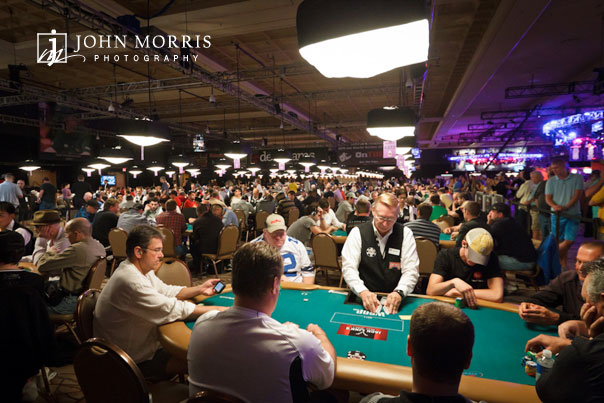
These lenses have several qualities in common. They are all high quality, professional-level lenses that respond and perform flawlessly in most situations. Their build quality is exceptional so they can handle the rigors and workload of a busy professional event photographer. They are all fast lenses. At 2.8, they are capable of low light work, giving me the flexibility, I needed at the WSOP.
So why zoom lenses? The main reason is flexibility. Being able to frame in-camera saves me time in post. The extended ranges let me compose as I go, particularly in cases where my movement is restricted. I can also quickly zoom in or out and create multiple crops and compositions from the same subject matter quickly and without changing positions if necessary.
Using a two-camera setup, instead of switching lenses, I switch cameras and I feel this is a bit faster at least for me. I generally have the 70-200 attached to my 1D Mark IV and a standard or wide zoom attached to my full-frame 5D Mark III. This gives me access to a full range of focal lengths. For example, from a position inside the ropes at the WSOP, I can capture a wide shot of the hundreds of tables full of poker players to a close up of a star poker player or celebrity poker player with a quick switch to my telephoto zoom.
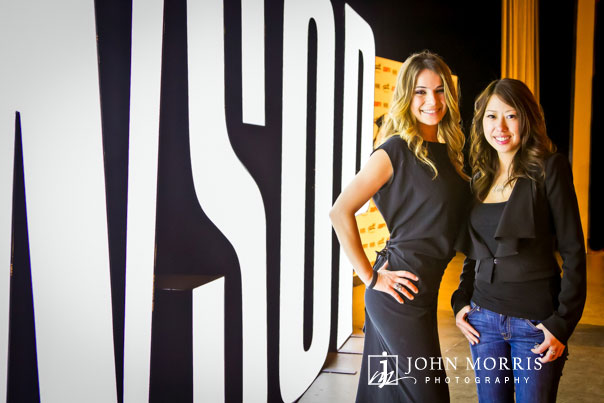
There is a skill to being able to instinctively know which lens is will capture the mood of a shot best and be able to quickly switch or even go back and forth as needed. For the best photographers, it becomes an unconscious skill that allows their vision to be realized unimpeded by the technical. It also means a higher success rate in capturing critical moments, relying much less on luck, and much more on skill.
There is far too much information to share about the importance of professional lenses and the skill to use them properly so I will wrap this post up with one final thought. Whether it is venerable DSLR or the newer Mirrorless Cameras, (which is a whole other discussion) the ability to use fast, interchangeable, flexible zooms are paramount to capturing high-quality images.
Point & shoots, camera phones, and cheaper lenses just can’t compete with professional glass and it inevitably shows in the quality of the images posted on the blogs and publications during the WSOP. I worked shoulder to shoulder with many social media specialists and marketing people during the event and while I give them the space and respect they needed, they were taking nothing more than grain, discolored snapshots.
In the end, professional quality does matter and while the camera is important, the quality of the lens and the skill of its user can make all the difference when it comes to high-quality imagery. Much of my success and ultimately, Bodog’s confidence in me came down to my ability and skill with high-quality glass.
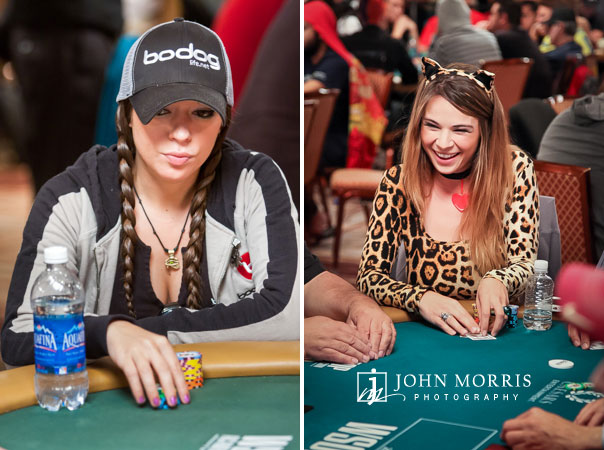
Well, that’s it for now, look for my next post soon and please take a look at some of my work including the World Series of Poker here
